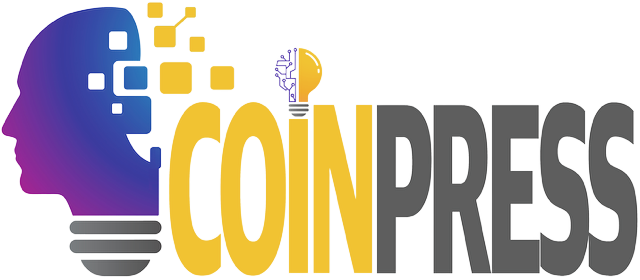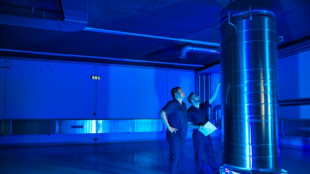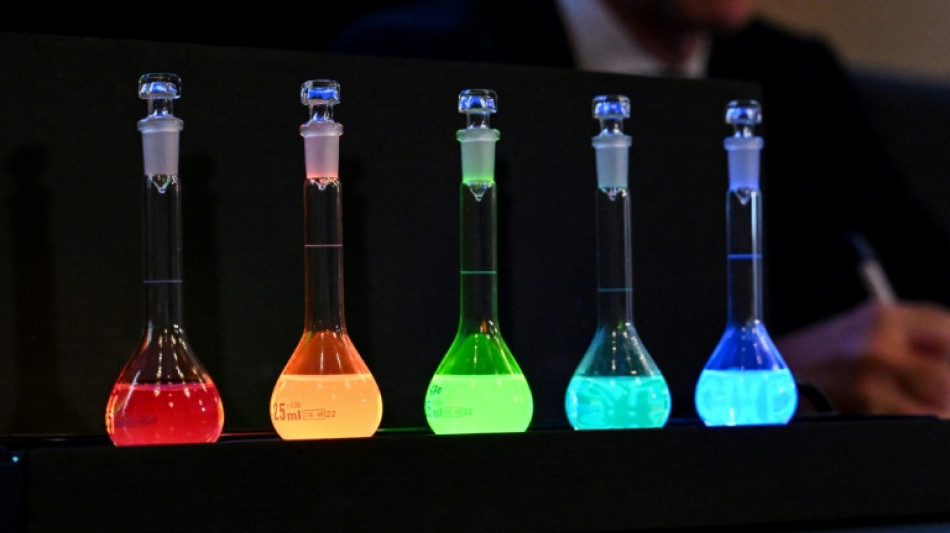
-
 Markets swing after Wall St losses as traders weigh US rates outlook
Markets swing after Wall St losses as traders weigh US rates outlook
-
Gabon early results show voters back new constitution

-
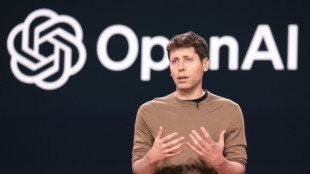 Is AI's meteoric rise beginning to slow?
Is AI's meteoric rise beginning to slow?
-
Biden touts climate legacy in landmark Amazon visit

-
 Biden clears Ukraine for long-range missile strikes inside Russia
Biden clears Ukraine for long-range missile strikes inside Russia
-
'Nobody can reverse' US progress on clean energy: Biden

-
 Biden allows Ukraine to strike Russia with long-range missiles: US official
Biden allows Ukraine to strike Russia with long-range missiles: US official
-
Biden clears Ukraine for missile strikes inside Russia

-
 Ukrainians brave arduous journeys to Russian-occupied homeland
Ukrainians brave arduous journeys to Russian-occupied homeland
-
'Devil is in the details,' EU chief says of S.America trade deal

-
 Toll in Tanzania building collapse rises to 13, survivors trapped
Toll in Tanzania building collapse rises to 13, survivors trapped
-
'Red One' tops N.America box office but could end up in the red

-
 Biden begins historic Amazon trip amid Trump climate fears
Biden begins historic Amazon trip amid Trump climate fears
-
Macron defends French farmers in talks with Argentina's Milei
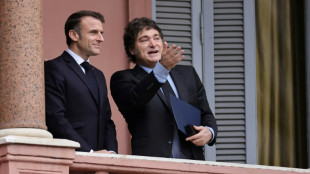
-
 India and Nigeria renew ties as Modi visits
India and Nigeria renew ties as Modi visits
-
Typhoon Man-yi weakens as it crosses Philippines' main island

-
 迪拜棕榈岛索菲特美憬阁酒店: 五星級健康綠洲
迪拜棕榈岛索菲特美憬阁酒店: 五星級健康綠洲
-
The Retreat Palm Dubai MGallery by Sofitel: Пятизвездочный велнес-оазис

-
 The Retreat Palm Dubai MGallery by Sofitel: A five-star wellness Oasis
The Retreat Palm Dubai MGallery by Sofitel: A five-star wellness Oasis
-
Power cuts as Russian missiles pound Ukraine's energy grid

-
 Biden in historic Amazon trip as Trump return sparks climate fears
Biden in historic Amazon trip as Trump return sparks climate fears
-
India hails 'historic' hypersonic missile test flight

-
 Debt-saddled Laos struggles to tame rampant inflation
Debt-saddled Laos struggles to tame rampant inflation
-
India's vinyl revival finds its groove

-
 Climate finance can be hard sell, says aide to banks and PMs
Climate finance can be hard sell, says aide to banks and PMs
-
Egypt's middle class cuts costs as IMF-backed reforms take hold
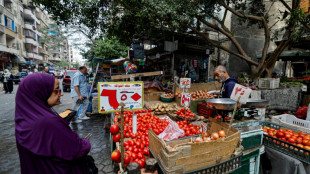
-
 Dinosaur skeleton fetches 6 million euros in Paris sale
Dinosaur skeleton fetches 6 million euros in Paris sale
-
Trump's Republican allies tread lightly on Paris pact at COP29

-
 China's Xi urges APEC unity in face of 'protectionism'
China's Xi urges APEC unity in face of 'protectionism'
-
Farmers target PM Starmer in protest against new UK tax rules

-
 UN climate chief urges G20 to spur tense COP29 negotiations
UN climate chief urges G20 to spur tense COP29 negotiations
-
Philippines warns of 'potentially catastrophic' Super Typhoon Man-yi

-
 Tens of thousands flee as Super Typhoon Man-yi nears Philippines
Tens of thousands flee as Super Typhoon Man-yi nears Philippines
-
Gabon votes on new constitution hailed by junta as 'turning point'

-
 Tens of thousands flee as Typhoon Man-yi nears Philippines
Tens of thousands flee as Typhoon Man-yi nears Philippines
-
Is Argentina's Milei on brink of leaving Paris climate accord?

-
 Fitch upgrades Argentina debt rating amid economic pain
Fitch upgrades Argentina debt rating amid economic pain
-
Trump picks Doug Burgum as energy czar in new administration

-
 At summit under Trump shadow, Xi and Biden signal turbulence ahead
At summit under Trump shadow, Xi and Biden signal turbulence ahead
-
Xi warns against 'protectionism' at APEC summit under Trump cloud

-
 Xi, Biden at Asia-Pacific summit under Trump trade war cloud
Xi, Biden at Asia-Pacific summit under Trump trade war cloud
-
Leftist voices seek to be heard at Rio's G20 summit

-
 Boeing strike will hurt Ethiopian Airlines growth: CEO
Boeing strike will hurt Ethiopian Airlines growth: CEO
-
US retail sales lose steam in October after hurricanes

-
 Spate of child poisoning deaths sparks S.Africa xenophobia
Spate of child poisoning deaths sparks S.Africa xenophobia
-
Comedian Conan O'Brien to host Oscars
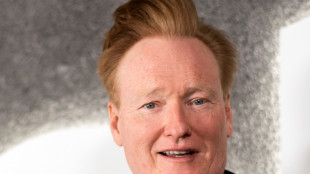
-
 Gore says 'absurd' to hold UN climate talks in petrostates
Gore says 'absurd' to hold UN climate talks in petrostates
-
Global stocks struggle after Fed signals slower rate cuts

-
 China tests building Moon base with lunar soil bricks
China tests building Moon base with lunar soil bricks
-
Oil execs work COP29 as NGOs slam lobbyist presence


Quantum dots: the tiny 'rainbow' crystals behind chemistry Nobel
Quantum dots are tiny crystals that scientists can tune to different colours, giving an extra-vivid pop to next-generation TV screens or illuminating tumours inside bodies so surgeons can hunt them down.
Three scientists won the Nobel Chemistry Prize on Wednesday for their work turning an idea first theorised in the 1930s into a reality that now has pride of place in living rooms across the world.
- What are they? -
Quantum dots are semiconducting particles just one thousandth the width of a human hair.
In 1937, the physicist Herbert Froehlich predicted that once particles were small enough -- so-called nanoparticles -- they would come under the strange spell of quantum mechanics.
To explain this quantum phenomenon, American Chemical Society president Judith Giordan said to "think of it like a little box".
When a particle is shrunk down small enough, the electron is "going to whack into the sides of the box," she told AFP.
In a larger box, the electrons would whack the sides less often, meaning they have less energy.
For quantum dots, the larger boxes emit red light, while the smaller ones show up blue.
This means that by controlling the size of the particle, scientists can make their crystals red, blue and everything in between.
Leah Frenette, an expert on quantum dots at Imperial College London, told AFP that working with the nanomaterial was like "watching rainbows all day".
But it would be 40 years after Froehlich's prediction that anyone was able to actually observe this phenomenon.
- Who discovered what? -
In the early 1980s, Russian-born physicist Alexei Ekimov -- one of Wednesday's new laureates -- melted coloured glass and X-rayed the results.
He noticed that the smaller particles were more blue, also recognising that this was a quantum effect.
But being glass, the material was not easy to manipulate -- and being published in a Soviet scientific journal meant few noticed.
At around the same time in the United States, another new laureate Louis Brus -- oblivious of Ekimov's work -- became the first to discover this colourful quantum effect in a liquid solution.
"For a long time, nobody thought you could ever actually make such small particles, yet this year's laureates succeeded," Nobel Committee member Johan Aqvist said.
"However, for quantum dots to become really useful, you needed to be able to make them in solution with exquisite control of their size and surface."
The third new Nobel winner, French-born Moungi Bawendi, found a way to do just this in his lab at the Massachusetts Institute of Technology in 1993.
By precisely controlling the temperature of a liquid mixture of particles called colloid, Bawendi was able to grow nanocrystals to the exact size he wanted, paving the way for mass production.
- What are they used in? -
The most common everyday use of quantum dots is probably in "QLED" televisions.
Cyril Aymonier, head of France's Institute of Condensed Matter Chemistry, told AFP that the nanocrystals "improve the resolution of the screen and preserve the quality of the colour for longer".
Doctors also use their bright fluorescence to highlight organs or tumours in the bodies of patients.
Frenette said she is working on diagnostic tests which would use the dots as "little beacons" for diseases in medical samples.
One problem is that most quantum dots are made using cadmium, a toxic heavy metal.
Both Aymonier and Frenette said they are working on quantum dots that are not toxic.
- Future use? -
In the future, quantum dots could have the potential to double the efficiency of solar cells, Giordan said.
Their strange quantum powers could produce twice as many electrons as existing technology, she explained.
"That's amazing, because we are coming closer to the limit of current solar materials," she added.
- Past use? -
The reds and yellows in stained glass windows as far as back as the 10th century show that artists of the time unwittingly took advantages of techniques that resulted in quantum dots, according to scientists.
C.Peyronnet--CPN
